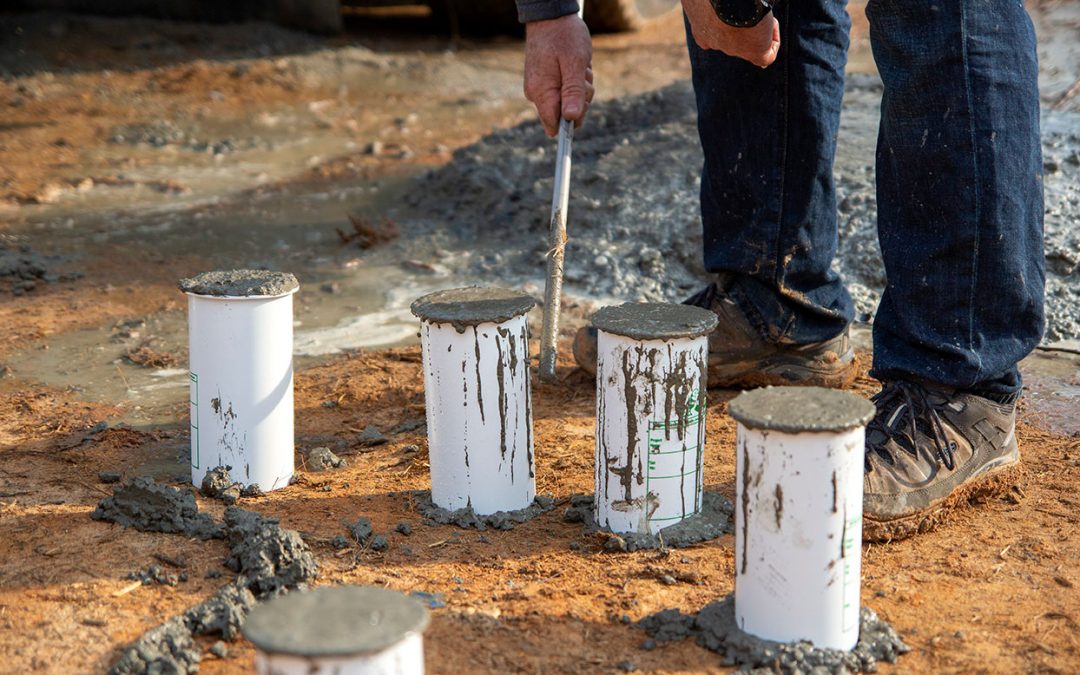Concrete Testing Procedures For DOT Applications
Common ACI Techniques & Tests
Any testing and techniques used should follow the guidelines set forth by ASTM International and the American Concrete Institute (ACI).
ASTM C172 – Sampling Freshly Mixed Concrete
This practice covers procedures for obtaining samples of fresh concrete as delivered to the project site. Testing then determines whether the concrete meets the required quality specifications. Never create concrete cylinders from the first or last 10 percent of a load.
ASTM C1064 – Temperature Of Freshly Mixed Concrete
Proper internal temperature is key to producing high-quality concrete. High temperature causes the mixture to set too quickly and displays erroneously high values when testing compressive strength. A low temperature leaves the concrete susceptible to freezing and causes brittleness and a significantly reduced compressive strength.
ASTM C143 – Slump Of Hydraulic-Cement Concrete
This standard governs the consistency and flow of fresh concrete. However, slump isn’t the same as workability which is the ease of concrete placement and finishing. Slump falls under three categories:
- True: This is the even drop in concrete mass at the top of the sample.
- Shear: Because the concrete lacks cohesion, it generally slides to one side after removing the cone.
- Collapse: The concrete collapses into a pile without the cone for support and generally shows a harsh, lean, or excessively wet mix.
This test is required for all concrete with a slump greater than one-half inch but less than nine inches.
ASTM C138 – Density (Unit Weight), Yield & Air Content
Density and strength have a direct correlation to one another. Generally, the denser the concrete, the higher the strength the final product will be. Tools used in this test include:
- Balance or scale;
- Tamping rod;
- Internal vibrator;
- Measure;
- Strike-off plate;
- Mallet; and
- Scoop
ASTM C31 – Making & Curing Concrete Test Specimens In The Field
Although there are numerous variables which can affect concrete in the field, this standard stringently guides how samples are tested to ensure conformity throughout the testing process.
Air Testing
Two options are available for air testing. Either method should begin within 15 minutes of capturing the concrete sample.
ASTM C231 — Type B Pressure Method
When a known pressure is applied to the sample, the change in concrete volume determines the amount of air. The unknown in the methodology is the amount of air inside the sampled concrete.
Aggregate Correction Factor
This accounts for any air stored or trapped inside the aggregate voids. Some suppliers provide the factor for mix designs, but many don’t. It can be determined through a field test although it’s generally completed in a controlled laboratory setting.
When To Use The Pressure Method
This method is usually for concrete made with dense aggregate.
ASTM C173 — Volumetric Method
Less prevalent than the pressure method, the volumetric method measures how much air is inside the mortar fraction of concrete. It isn’t affected by potential air inside porous aggregate. The method is frequently used for concrete with:
- Air-cooled slag;
- Lightweight aggregates; and/or
- Highly porous or vesicular natural aggregates.
Air is removed through agitation inside a closed, water-filled container; the amount of air depends on the drop in water level.
How Does Calibration Affect Concrete Testing Procedures?
Calibration centers on the individual materials used in concrete production, not the mixer. The materials are calibrated to each mixer, with cement remaining constant while aggregate amounts and other ingredients are introduced in various amounts based on the mix design specifications.

